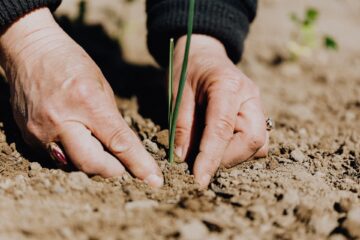![]()
Introduction:
Every human holds some intellect that makes them different from others. He uses his abilities for personal growth and the development of society at large. Some men develop this intellect with new learning and experiences, whereas few are born with it. The intellectuality can be made accessible to the general public with the ownership of it. The ownership of an idea by its creator is shared with its user to avail the same through a system known as Intellectual Property Rights. The legal framework under Intellectual property enables the user to enjoy the sole right over his property. The creator can invest his time and energy to expand, innovate, and upgrade his innovation. There has been rapid growth in the Copyright industry. The growth of the nation affects the number of copyrights/Intellectual properties it holds. Growth trend recognizes the Intellectual property to be knowledgeable and informative with commercial value.
The concept of IP was brought to the stage of world economic order by the World Trade Organization. Thus, at the global level, Intellectual Property Rights gained recognition at the social and legal. Intellectual Property refers to the creation of the human intellect. Intellectual Property, as defined by the World Intellectual Property Organization, means the legal rights, which result from intellectual activities in the industrial, scientific, literary, and artistic fields. Ip can also be co as intangible or incorporeal property. IP was further classified, by the agreement on Trade-Related Aspects of Intellectual Property Rights (TRIPS) of World Trade Organization, under seven heads, namely;
- Copyrights and related rights
- Trademarks,
- geographical indications,
- industrial designs
- patents
- layout designs (topographies) of integrated circuits,
- protection of undisclosed information, including trade secrets.
Copyrights can be registered under Copyright Act, 1957. It provides the legal ownership of registered work. As per Section 2(d) of Copyrights Act, 1957, an author connects literary, dramatic, musical, and artistic work, producers of cinematography, films, and sound recording. Such an author is given the rights of his work known as “copyright.”
The copyrighted work cannot be copied or used without the permission of the author or its creator. The copyrighted work can be borrowed from the owner or its creator in return for money. This Act protects the position and rights of the author. Unlike patents, copyrights protect the ideas, not the expression. This gives the author or creator the right to distribute, replicate or reproduce the work or give authorization to another entity. This right restricts the copying of ideas, procedures, methods of operation, or mathematical concepts[1]. In Kartar Singh Giani v. Ladha Singh and Others[2], the court explained the term copyright. Court said copyright refers to the sole right to produce, reproduce the work or essential part of that work in any material form.
Copyright is defined under Section 14 of the Copyrights Act, 1957.
The copyright cannot be granted to the idea alone. As per Section 13, the following can be protected under Copyright Law:
- Original Literary work, including books,
- Original Dramatic work,
- Original Musical work,
- Original Musical work,
- Original Artistic work including painting and photographs,
- Cinematography films,
- Sound recordings,
- Computer Programme including websites,
- Television or radio broadcast,
- Published editions.
In the case of Pepsi Co. Inc & Others. v. Hindustan Coca Cola Ltd. &Anr[4], Respondent mimicked the product layout of the appellant, which was distinguishable by its user. The respondent tried to copy the layout of the appellant’s product. The court held that Section 14 of the Copyright Act, 1957 protects the cinematography works, and thus the respondent was restrained from showing commercials in the present form.
Eligibility
The list of work stated in Section 13 of the Copyright Act, 1957, is eligible for copyrights. The class of work must include essential elements required for holding such rights. These essential elements include:
Original Work
The work has to be original in the skill, judgment, or labour context. Literary or artistic work includes less or originality, but it must include the originality of the idea. The work has to be independent creation of the author and is continental of creativity.
Material Expression
The work has to be expressed in some material form, like writing, video, songs, cinematographically presenting an idea or information. No ownership is granted to the idea, information, facts, style, or technique. It has to be expressed in writing or recorded, i.e., in tangible form. Any kind of work published on the internet will be protected in the same manner as if it would have been published.
Category Prescribed
The class of work prescribed under Section 13 of Copyrights Act, 1957 is protected and copyrighted. Any work which falls under the category mentioned will be granted copyright after satisfying the prescribed conditions.[5]
Thus, it is the responsibility of the author to be aware of his work. He must know in what category the work falls in to ensure that the work is protected and enjoy his right and benefits.
Required Documents and Forms
For smooth registration, it is necessary to submit essential documents according to the different categories of work. Broadly, the essential documents required for the registration of copyright are:
- If the work is published, then three copies of the published work are required with the year and the address of first publication;
- The information regarding the year and country of the ensuing publication has to be submitted;
- If the work is not published, not then two copies of the manuscript are required;
- A no-objection certificate from the publisher is required, in the case when the publisher is no the applicant;
- If the work is not the work of the applicant, then the authorization of the work is required;
- When the attorney applies; he then has to submit special power of attorney or vakaltnama signed by the attorney and the party;
- Information regarding the title, the language of the work, and the name, address, nationality, mobile number, email address of the applicant has to be submitted;
- If the application is filed by someone who is not an author of the work, then the author’s name, address, and nationality, and a no-objection certificate from the author are required. This might also include an authorization from the author;
- In case when the author died, and the application I submitted by his legal heir, then the name, address, nationality, and date of death of the author has to be submitted;
- A no-objection certificate from the trademark office has to be submitted in the case when the work is used on a product;
- In case a photograph of a person appears in work, then a non-objection certificate from the person is required;
- The source code and object code are necessary when copyright is filed for software.[6]
Legal Rights of the Copyright Owner
With the benefit of copyrights of the work, the author also enjoys quite a few benefits. These are as follows:
- Right for the copyright owner,
- Right for adaption,
- Right to reproduce,
- Right of public performance,
- Right for distribution,
- Right for paternity and integrity,
- Right of the communication to the public.[7]
Process
Original work can be registered by submitting the required documents. With the submission of the required documents, the procedure for the registration of copyright follows. The original work is registered with the copyright registrar under Chapter X, Section 45 of the Copyrights Act, 1957, and Rule 70 of the Copyright Rules 2013. These steps include:
- The author of the work or the claimant has to apply either physically or through the website.
- If there are two types of work to be registered, separate documents with the requisite fee must be filed for each of the work, accordingly. The fees may vary with the class of work.
- The registrar, on receiving an application, will issue a dairy number to the applicant.
- The allotment of dairy numbers follows the examination of the application. A copyright examiner examines the application within at least 30 days, also known as a waiting period. Within this period, objectives can arise and be reviewed.
- When the objection is raised by a party other than the applicant, both the parties are then called for a hearing by the registrar. After the hearing of objection is raised, if the objection is rejected, the application is then sent for scrutiny, and registration is carried forward.
- In instances where the objection raised is not clarified, the application is rejected. A rejection letter is sent to the applicant, and the procedure of copyright registration ends then and there.
- If there is no objection raised, the examiner review and scrutinize the application for to determine any fault:
- If there is no fault involved and all the requirements of the application are fulfilled, the application is allowed to move further,
- If any mistake or error is found, an application of error is sent to the applicant. Based on the reply of the applicant on the error, a hearing is conducted. Upon the resolution of the error, the application is moved further.
- Further, if the registrar feels so, they can ask for more documents. If the registrar is satisfied with the documentation and claim made, he will enter the copyright details into the registrar of copyrights and issue a certificate of registration.
- Thus, this process ends with issuing the Extracts of the Register of Copyrights (ROC).[8]
Since the copyright registration process involves a lengthy procedure, it can take up to 1-2 years. With the requirement of the above-stated procedure, copyright registration is issued to an author for his original work.
Benefits
The main idea behind copyright was framed out in Hawkins Cookers Ltd. V. Magic Cook Appliances Co[9]; it was observed that copyright is to restrict the malpractices of the manufacturers, who try to create a representation of their infringed work as original among its users. These malpractices are carried to enhance their goodwill in the market.
To provide legal protection to the efforts of the author, copyright is granted. Those who try to steal or infringe will be punished with these stringent laws. The copyright is granted even after the death to respect and honor the hard work of the author. The copyright is not restricted to the original creator’s life span. His legal heirs can look up for the extension of this right, up to 60 years even after death.
This creates a sense of belongingness or ownership among the author. The author feels proud and the sole owner of his hard work. The owner and his work get recognition at the national and international levels, boosting his self-confidence. He tries to care for his work, which is a certain manner enhances the goodwill, credibility of the author among the users. The copyrighted work receives global protection. If a work is copyrighted in India, it is protected in foreign countries.
In litigation, the copyrighted work can be used as prima facie evidence. The copyright registration is essential evidence in the case of forgery. Since copyrights create ownership over a certain work, a record is made in the author’s name. Thus, these record holds an evidentiary value. The author also holds an asset in the form of copyrighted rights. An asset that can be traded rented, or can be used for commercial transactions.
Validity
Section 22-29, Chapter 5 of Copyrights Act, 1957, talks about copyright terms. The author of literature, drama, music and artistic work holds the copyrights for a lifetime, and even after 60 years of his death. These 60 years are counted from the year following the death of the author.
Whereas, as per Section 23, Copyrights of cinematographic films, sound recordings, posthumous publications, anonyms and pseudonymous publication, work of government, work of the international organization are protected for 60 years from the year following the date of publishing.
Conclusion
Creativity, if encouraged, leads to the economic and social development of the author and society. Copyright act as a medium of encouragement to them. Copyright registration is necessary for the author to protect his work from being infringed or used by others without his/her permission. When the work is copied illegally, the author can swiftly move to court for his rights. Any person who tries to steal the work of the author, if found true, can be penalized.
References:
[1]Legal Raasta, Copyright Registration, https://www.legalraasta.com/copyright-registration/
[2]AIR 1934 Lah 777
[3]The Copyright Act, 1957, (14 of 1957), Copyright Office, Government of India.
[4]2003 (27) PTC 305 (Del)
[5]Copyright License New Zealand, What Qualifies for Copyright requirements, https://knowledgebase.copyright.co.nz/hc/en-us/articles/115002976293-What-Qualifies-for-Copyright-Protection-
[6]MariyaPaliwala, ipleaders, Procedure for Copyright Registration under Indian Copyright Act, 1957, January 14,2020, https://blog.ipleaders.in/copyright-registration/#Essential_documents_required_for_copyright_registration
[7]Vikram Shah, vakil search, Documents Required for Copyright Registration India, https://vakilsearch.com/advice/documents-required-for-copyright-registration-in-india/
[8]IndiaFilings, Copyright Registration Process and Procedure, https://www.indiafilings.com/learn/copyright-registration-process-procedure/
[9]00, (2002), DLT, 698



0 Comments